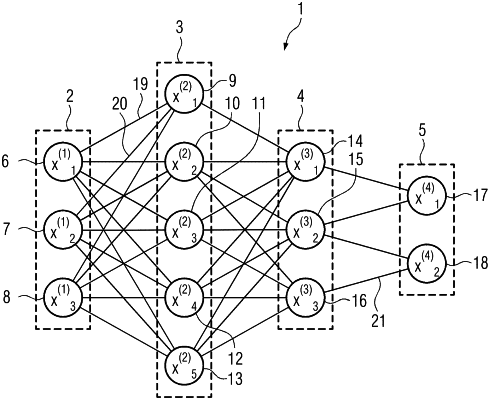| CPC G06T 5/006 (2013.01) [A61B 6/4035 (2013.01); A61B 6/52 (2013.01); G06T 5/002 (2013.01); G06T 5/20 (2013.01); G06T 9/002 (2013.01); G06T 2207/10116 (2013.01); G06T 2207/20081 (2013.01); G06T 2207/20084 (2013.01)] | 15 Claims |

|
1. A method that is computer-implemented and is for provision of a correction algorithm for an x-ray image that has been recorded with an x-ray source emitting an x-ray radiation field, a filter device spatially modulating an x-ray radiation dose, and an x-ray detector, wherein the correction algorithm comprises a trained first processing function configured, from first input data that comprises at least one first physical parameter describing the x-ray radiation field, a measurement, or the x-ray radiation field and the measurement, and at least one second physical parameter describing the spatial modulation of the filter device, to determine first output data that comprises a mask for brightness compensation with regard to the spatial modulation of the filter device in the x-ray image, the method comprising:
providing first training data comprising first training datasets each with a mask, wherein each of the first training datasets is assigned the at least one first physical parameter and the at least one second physical parameter of the first input data assigned for determining the mask,
providing an autoencoder for masks, wherein the autoencoder has an encoder for determining a latent space representation of the mask and a decoder for determining a comparison mask from the latent space representation;
training the autoencoder using the first training data;
determining an assignment rule between the at least one first physical parameter and the at least one second physical parameter of the first input data, which are assigned to the first training datasets, and the latent space representations of the masks of the respective first training dataset; and
providing the trained first processing function as a combination of the assignment rule and the trained decoder.
|